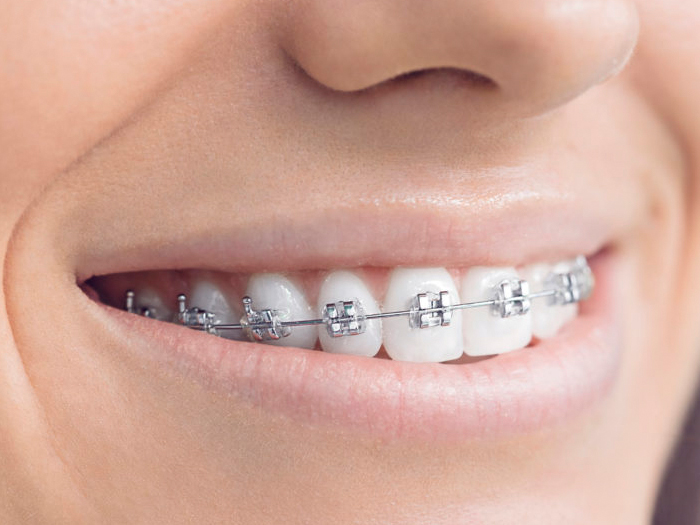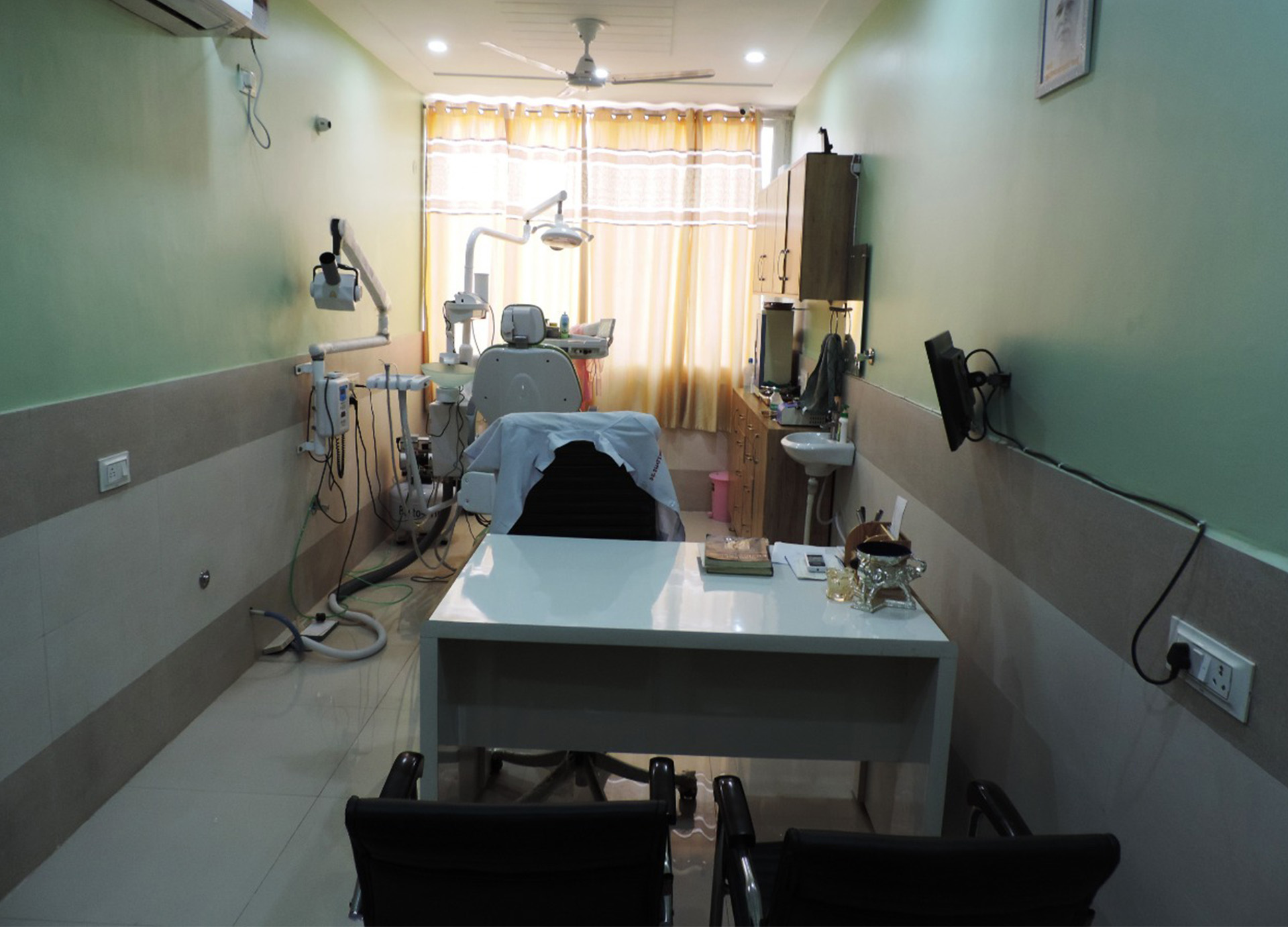
-
Shop No. 7,Sec-3,Part-II
HUDA Market,Rewari

Call Now
9518822965
Braces & Aligners

Braces are a boon in the field of technology which contributes in your overall facial aesthetics by keeping the teeth structure in proper shape. Dental braces are made up of brackets, wires and bands and together they form solid support to restructure the abnormal teeth settings. From irregular teeth positioning to jaw correction as well as enhancing smile aesthetics, braces and aligners are great non-surgical treatment to get your teeth in right order. Consulting the dental practitioner, you can get the right recommendation for your treatment.
Braces and the use
The primary purpose of braces is to improve the facial structure and overall appearance by correcting the teeth arrangement. However, there are various teeth related orthodontic conditions that might need the braces treatment, such as the open bite, jaw structure, crossbite etc.
Adult Dentition
Adult dentition is development of permanent teeth structure after the deciduous teeth erupt. The permanent teeth are crucial and aid in digestion, speech and appearance. This phase of permanent teeth setting can be aided or corrected using braces. Some of the conditions that are possible to be treated/corrected using braces include:
- Crowding: it is haphazard placement of teeth which often lead to poor oral hygiene. Not maintaining oral hygiene can lead to teeth issues such as cavities, which is also known as dental caries.
- Chewing efficiency can be affected if the person has improper bite due to the teeth arrangement.
- Crooked teeth are other reason to get your braces as this can lead to conditions such as periodontal condition which is also known as bleeding gums, bad breath (halitosis) and premature loss of teeth (aka tooth mobility).
- Irregular teeth can also lead to calculus deposition that will cause teeth to turn yellow.
- Proclined teeth or forwardly placed teeth will cause convex profile which will eventually cause posteriorly displaced chin.
- Open bite problem can be corrected using braces.
- Teeth spacing can cause various imperfections in speech.
Know about Mixed Dentition
Mixed dentition is when a person has a combination of teeth, that is, primary and permanent teeth. Wearing braces will help correcting:
- Jaw growth disorder
- Crooked teeth correction
Right Time to Get Braces
There is no right time to get the braces as every individual is different. Being said that, orthodontic treatment such as braces can be started anytime after the age of 7 and there is no upper limit for the age as long as the teeth are in good condition and possible to get the teeth in braces. Good oral health and strong or firm teeth is what needed to get braces.
Different types of braces that one can get
Metal conventional braces:
Metal braces are also known as the traditional braces and are the most common type of braces that are known. However, the type of metal braces that are used today in orthodontic treatments are quite smaller in size and comfortable to wear. To tie the wires and braces together, elastics are used which come in different color and size. Wires use the body heat to rearrange the teeth without pain. Patients of all ages are eligible to get these metal braces for the dental treatment.
Metal self ligating braces:
Metal self ligating braces are known for the special metal brackets and shutters that work as lock to tie the wire and thus no need to use elastics. If you compare the traditional metal braces to these metal self ligating ones, the ligating braces are more comfortable and easy to wear and get used to. Another advantage of self ligating metal braces is that you can achieve arch expansion without needing for extraction.
Ceramic conventional braces:
Ceramic braces are as effective as metal braces but they are also clear brackets that can be more appealing from aesthetic point of view. Use of ceramic brackets make it easier to blend with the teeth without making the wearer feel awkward or uncomfortable in public. shape and size of these braces are similar to the metal ones. Often teenagers and adults prefer ceramic conventional braces for aesthetic concerns. However, one might have to take a little more care than metal braces when using ceramic braces as they are prone to breakage.
Lingual braces:
Lingual braces are used behind the teeth and are heavy metal braces. These metallic braces can be made using gold or silver wire. Customized brackets are used and CAD-CAM/3D designing is used to customize these brackets. As these are aesthetically pleasing, these are easy to wear and less visible.
Aligners:
Aligners or clear aligners are actually medical grade plastic trays thus no need of braces or wire. When wearing aligners, you don’t have any food restrictions. Also, there are no such speech difficulties related to use of aligners. These transparent braces are actually considered quite comfortable and hygienic.
How to take care of your teeth with braces?
- Brush and floss regularly (which is two times a day). Healthy and clear teeth respond better to the orthodontic treatment.
- Don’t miss your dentist follow-ups and visit them whenever asked to.
- Be patient with your treatment procedure and don’t expect to see results overnight as every individual case is different.
Do’s & Don’ts when wearing braces
- Avoid eating sticky food items such as caramel or gum
- Use a mouth guard if you are wearing braces and engage in sports activities.
- Avoid consuming carbonated drinks.
- Don’t let food stuck on your braces and maintain oral hygiene by brushing after every meal.
- Visit your dentist on expected follow-up dates.
- Avoid chewing on hard food items such as ice.
- Avoid biting your nails.
- Floss your teeth regularly to keep your teeth in good shape.
Book an appointment





